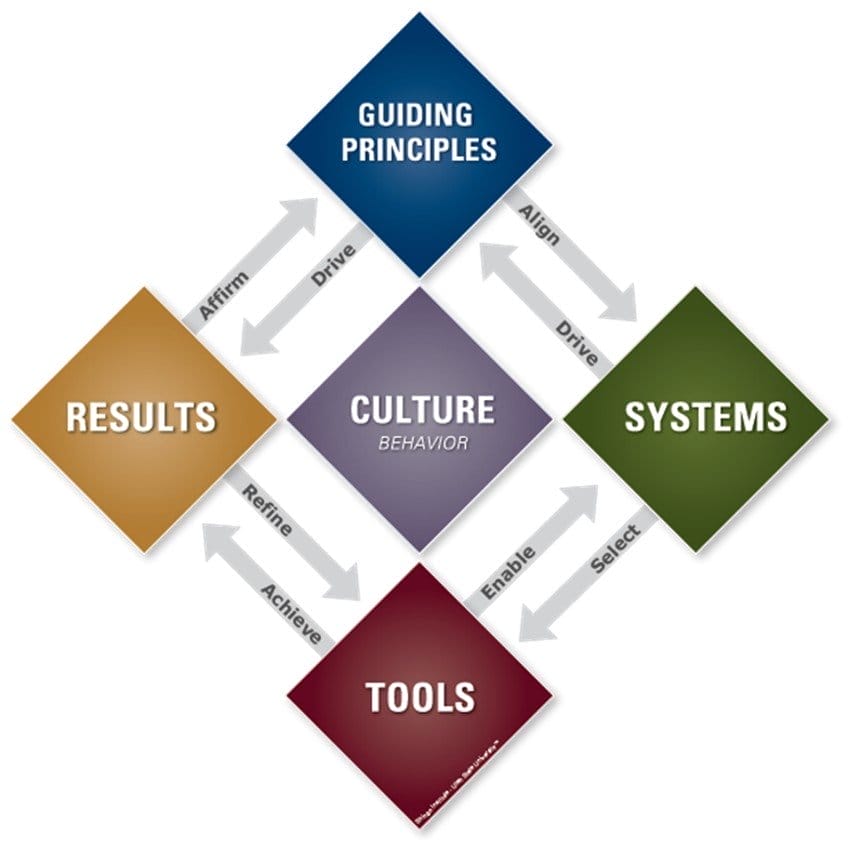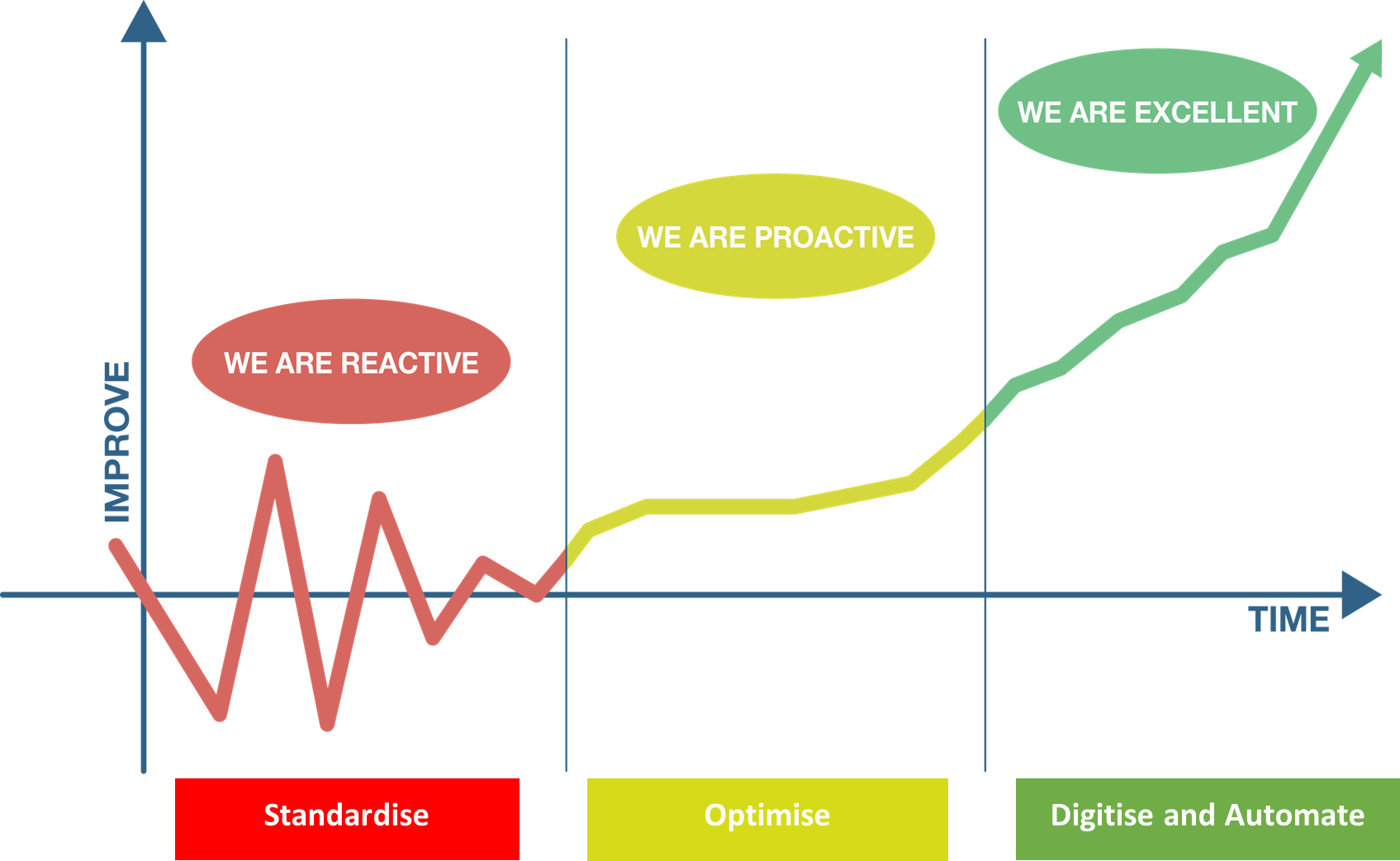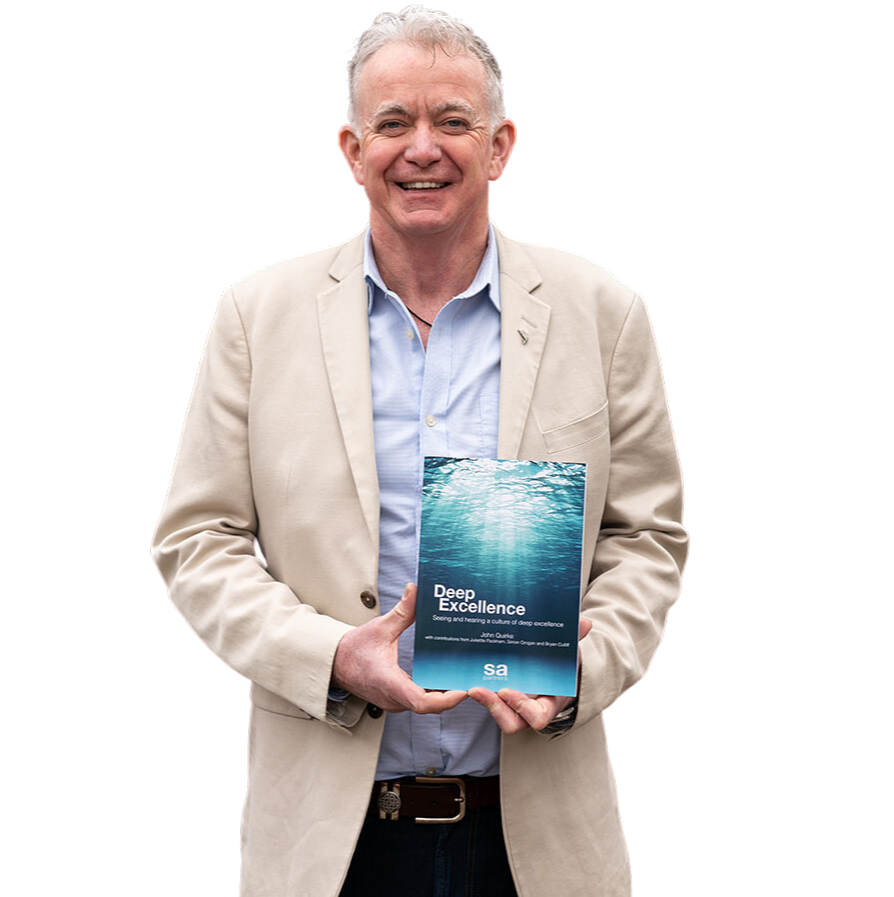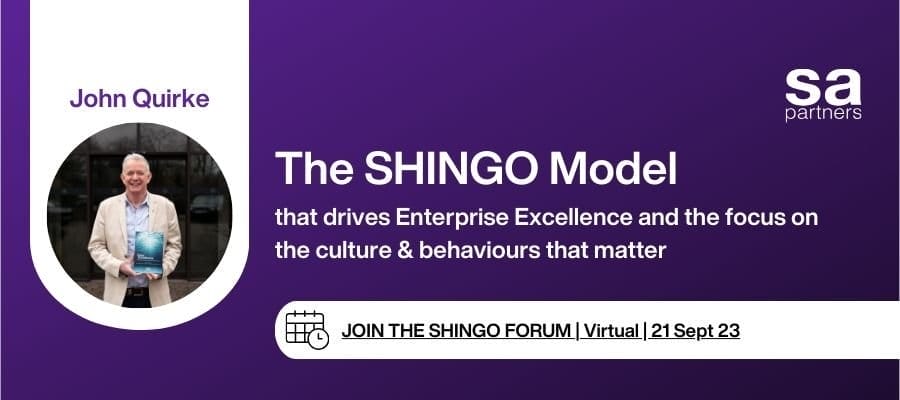By John Quirke, Author
In 1988 as a recognition for his work across a broad range of industry sectors, Shigeo Shingo was awarded an honorary Doctor of Management from Utah State University. Over the course of his life Dr. Shingo wrote eighteen books on the improvement of work and the processes that support the effectiveness of work. Many terms we use widely today such as ‘single minute exchange of die’ (SMED) and ‘go see activity’ or ‘going to Gemba’ originated in Dr Shingo’s writings. The adoption and expansion of Dr. Shingo’s thinking and philosophy led to the development of the Shingo Enterprise Excellence Model, and the formation of the Shingo Institute, within the Jon M. Huntsman School of Business at Utah State University.


The Shingo Institute
has drawn on a wide range of expertise and research to expand the philosophy behind the original model to include a critical focus on the quality of leadership, organisational culture, and the critical link between desired behaviours and the impact of business system on these behaviours.
The outcome of the majority of business activity is based on a human behaviour and the actions that result for that behaviour.
The behaviours that count, are the ones that result in an action that we could see or hear.
- An employee may see a problem but fail to raise it as an issue.
- A leader fails to react to an obvious breach of agreed standards of work or safety protocols.
- A supervisor may angrily chastise a team for poor performance.
- A quality engineer develops a poor corrective action without seeing or ‘touching’ the process.
All the above are behaviours that will result in possible customer dissatisfaction, loss of trust, or loss of integrity. At S A Partners we refer to these behaviours as ‘NIBs’, ‘Not Ideal Behaviours’. Consider all the NIBs in your organisation. How many have a direct impact on your bottom line?
I like to use the ‘two click rule’ to get serious about dealing with NIBs. If that employee allows the damaged product to pass their workstation (click 1), and that part is missed during quality sampling (click 2), there will be an impact on the bottom line and the integrity of our product in the marketplace.
As an example, we regularly see a focus on generating improvement ideas in organisations. This is seen as key behavioural indicator. The idea being, that incremental ideas add together as marginal gains to improve overall performance. This is a fine a laudable approach when process is stable, and we are seeking incremental improvements. But when the process is in the red zone of variation and firefighting there are many KPI’s, alarms and often customers screaming at us to tell us what the problems/opportunities are now! Yes, we need improvement ideas, but these ideas must be focused on the issues and problems at hand. They require strong direction and good leadership to ensure teams are not distracted and get the time and support to implement their ideas effectively.
So where should focus behavioural measures in the above example? Good implementation of employee ideas? Well maybe. But initially the behavioural measures must focus on the quality of leadership. Are leaders spending time with their teams to support and understand their issues? Are leaders appropriately recognising effort and exemplar behaviours within their work teams? Are leaders actively involved in supporting and facilitating cross functional problem solving. Gaining control and exiting the ‘red zone’ is dependent on the quality of leadership not on the random improvement suggestions of employees.
The point is organisations can spend a lot of effort measuring behaviours that do not have a direct impact on the effectiveness and efficiency of the work that needs to take place to meet customer expectations. At the end of the day, it is about delivering measurable results.
The Shingo Model’s focus on culture and behaviour is there so that organisations become laser focused on the behaviours necessary to make the difference between winning or losing.
Systems Thinking
An important insight brought by the Shingo Enterprise Excellence Philosophy is that expressed behaviours (actions or conversations) whether they are good or bad are a result of the quality of the systems within the business, or the absence of them. The employee who passes a defective part may be measured for the most part on units produced per minute. The quality engineer is driven by a corporate quality system that focuses on corrective action closeout rather than effective problem solving.
“If you need to change behaviour you must consider the systems and processes that drive the behaviour you need to change.”

S A Partners Improvement Journey Model
The power of the guiding principles
Many companies speak to high level values. But very few connect these values to what is important for business success. Even fewer translate values into observable effective winning behaviours. The ten guiding principles within the Shingo Enterprise Excellence model give organisations ‘lenses’ through which to view the work that they do and give insight into the necessary ideal behaviours necessary to support sustainable excellent performance. The principles can be backed into’ set organisational values yet give a firm guide as to what aspirational values need to look a feel like where the value adding work gets done.
Taking some examples:
Does everyone in your organisation feel respected as an individual? Are they are listened to? If their concerns or ideas are not listened to, if they are not developing as individuals or the organisation is not keeping them safe physically and psychologically, then they are not being respected.
If leaders spend their time telling teams what they should or should not do they are not leading with humility and the team will become dependent. There will be no organisational learning, and poor leadership habits at senior level will be amplified as we travel down the organisational layers.
Equally if we consider some of the principles within the Shingo dimension of Continuous Improvement, do you see a true Focus on Process within your teams where standards are clear current, understood and regularly reviewed and improved by those who use them?
Or how about Flow and Pull? Do we have a clear line of sight as to how you flow customer value through all aspect of work? From sales to delivery and receipt of payment? Do processes really flow or are they overly complex, bound up in compliance culture and continually prone to error and delay? The flow of value in response to the pull or demand of the customer, thrives on elegance in process and work design. It requires detailed knowledge of the work and the factors that impact the speed and reliability of the work. The individuals who discover and cherish this knowledge are those individuals who are closest to the work. These individuals have incredible leadership who are excited by these discoveries and actively celebrate the constant improvement of the work by the team.
I encourage the reader to read their definitions along with the remaining principles in the freely available Shingo Handbook from the Shingo.org website.
While the Shingo Enterprise Excellence Model is an incredibly powerful approach to developing sustained levels of excellence in an organisation it does bring challenges. It requires real and genuine commitment for a site leadership team. They as a team must own it.
Another challenge we see arises from the complexity within corporations and their approach to enterprise excellence. Often, we see sites who have gone on a ‘solo run’ having gained initial approval for the approach but then find themselves in a sea of confusion as attempts are made to align the Shingo Model with corporate values, improvement systems even branding!
Personally, I see the Shingo Enterprise Excellence model as providing an extremely powerful framework to develop a holistic approach to sustainable organisational excellence. Many existing programmes and systems can be aligned to a clear unambiguous focus on excellence. A focus that is supported by leadership skills that enable their teams to be brilliant at what they do.
It is a tough journey, but it can also be extremely rewarding.
Please do, get in touch or join us at an upcoming Intro to Shingo Workshop
Best
John
moc.srentrapasobfsctd-537fa8@ekriuQ.nhoJ

About John Quirke
John Quirke is a partner with S A Partners and is a Shingo Examiner.
John holds a BSc, MSc and BCL degrees and has over twenty five year experience in the area of operational excellence.
John co-authored the Shingo Prize winning Publication TPM a Foundation of Operational Excellence with colleagues Peter Wilmott (RIP) and Any Brunskill.
John has recently published Deep Excellence – Seeing and Hearing a Culture of Deep Excellence, with contributions for colleagues Juliette Packham, Bryan Cutliff and Simon Grogan.
For more information please visit www.sapartners.com and www.shingo.org
